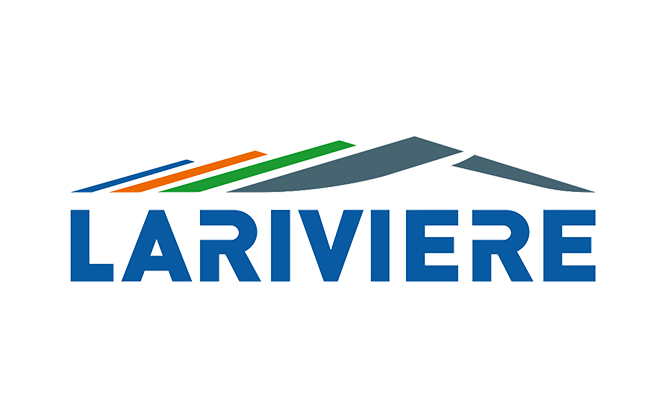Video games have evolved far beyond simple entertainment, becoming powerful tools for education and personal development. Central to this evolution is the concept of game progression, which structures the player’s journey through increasingly complex challenges. By carefully designing levels, developers can foster engagement, facilitate learning, and motivate players to master new skills. This article explores how effective level design, exemplified by modern games like proper p1rots 4 💎 glitch, bridges the gap between entertainment and education, creating enriching experiences for diverse audiences.
Table of Contents
- Introduction to Game Progression and Level Design
- Theoretical Foundations of Level Progression
- Mechanics of Level Structuring in Modern Games
- Case Study: Pirots 4 – An Illustration of Progressive Design
- Using Levels to Introduce and Reinforce Game Mechanics
- Unlocking Hidden Content and Advanced Features via Progression
- Non-Obvious Strategies in Level Design for Educational Impact
- The Broader Impact of Level-Based Progression on Player Retention
- Future Trends and Innovations in Level Progression
- Conclusion: Effective Strategies for Enhancing Player Experience through Levels
Introduction to Game Progression and Level Design
Progression in video games refers to the structured advancement of difficulty, complexity, and content as players move through the game. It is fundamental because it maintains interest, provides clear goals, and facilitates learning new mechanics in manageable steps. Well-designed progression systems help players experience a sense of achievement, encouraging continued engagement and skill development.
Levels serve as the building blocks of this progression, acting as milestones that guide players through an increasingly challenging environment. When levels are thoughtfully crafted, they not only enhance engagement but also serve as educational tools, introducing new concepts gradually and reinforcing previously learned skills.
For example, in puzzle or strategy games, levels often increase in complexity, helping players develop problem-solving skills incrementally. This layered approach aligns with educational principles, ensuring that players are neither overwhelmed nor bored, fostering a deeper learning experience while having fun.
Theoretical Foundations of Level Progression
Cognitive Development through Incremental Challenge
Research in cognitive psychology suggests that learning is most effective when challenges are calibrated to the learner’s current skill level. Games leverage this by increasing difficulty gradually, promoting scaffolding—a process where new skills are introduced within a supportive environment. For instance, early levels might teach basic mechanics, while later levels combine these skills into complex puzzles, encouraging critical thinking and adaptability.
Motivational Theories: Mastery, Achievement, and Flow
Theories by psychologists like Mihaly Csikszentmihalyi emphasize the importance of flow states, where challenge and skill are balanced to produce optimal engagement. Achievements and mastery foster intrinsic motivation, prompting players to progress further. Well-structured levels tap into these theories by providing achievable goals, clear feedback, and a sense of progression, which are crucial for sustained engagement.
Balancing Difficulty and Accessibility
Designers must cater to a diverse player base, from novices to experts. Adaptive difficulty systems, which adjust challenges based on player performance, exemplify this approach. For example, in early levels, simple puzzles build confidence, while later challenges require strategic planning, ensuring accessibility without sacrificing depth.
Mechanics of Level Structuring in Modern Games
Types of Level Progression
- Linear progression: a straightforward path where each level follows the previous one, often used in story-driven games.
- Branched progression: players choose paths, leading to different levels or outcomes, fostering exploration and strategic decision-making.
- Open-world design: offers freedom to explore non-linearly, with levels or challenges scattered across a large environment, promoting discovery and experimentation.
Use of Rewards, Unlockables, and Milestones
Incentives like points, badges, or new content motivate players to progress. Unlockables—such as new characters, abilities, or game modes—serve as tangible rewards for achieving milestones, reinforcing continued engagement. For example, collecting specific symbols or completing levels unlocks bonus features, making progression both meaningful and rewarding.
Narrative and Thematic Integration
Embedding story elements and themes within levels enhances immersion and learning. Themes guide level design choices, creating cohesive experiences. For instance, an adventure game might use levels to represent different stages of a journey, with each level teaching new mechanics aligned with narrative developments.
Case Study: Pirots 4 – An Illustration of Progressive Design
Overview of Pirots 4’s Gameplay and Level System
Pirots 4 exemplifies modern level progression by integrating engaging mechanics with educational principles. Its gameplay revolves around matching symbols, unlocking new features, and discovering hidden modes like “Lost in Space.” The level system gradually introduces new symbols, challenges, and rewards, guiding players through a layered learning process that maintains motivation and curiosity.
Guiding Players Through Increasing Complexity
Initially, players encounter basic symbols and simple tasks. As they progress, the game introduces new features like wilds, bonuses, and special symbol collections. Each level acts as a stepping stone, consolidating previous skills while presenting new challenges, exemplifying effective educational progression.
Educational Aspects of Progression in Pirots 4
The game demonstrates how incremental difficulty and layered content foster strategic thinking and pattern recognition. For instance, the four collector birds teach players to identify and predict symbol arrangements, reinforcing cognitive skills in a playful context. Such design principles are vital for educational game development, blending fun with learning.
Using Levels to Introduce and Reinforce Game Mechanics
Gradual Introduction of Symbols and Features
Effective level design introduces features in manageable steps. Early levels might focus on familiar symbols and basic spins, while later stages introduce upgrades, wilds, and bonus symbols. This approach ensures players learn mechanics without feeling overwhelmed, fostering confidence and mastery.
Teaching Pattern Recognition with Collector Birds
In Pirots 4, the four collector birds exemplify how game mechanics can serve an educational purpose. Players learn to recognize symbol patterns and timing, which are crucial for unlocking special modes and maximizing rewards. Such mechanics subtly teach cognitive skills like visual memory and strategic anticipation.
Mastery Through Tiered Challenges
Progressive challenges—ranging from simple to complex—encourage players to refine their skills. For example, initial levels might focus on basic symbol collection, while advanced levels require strategic use of wilds and bonuses, promoting deep learning and mastery.
Unlocking Hidden Content and Advanced Features via Progression
Triggering Special Modes like “Lost in Space”
In Pirots 4, collecting specific symbols unlocks the “Lost in Space” mode, adding an element of surprise and exploration. This mechanism rewards players for skillful play and symbol collection, illustrating how progression can unlock layers of content that deepen engagement and learning.
Unlocking Transformations and Bonuses
Advanced features, such as symbol transformations or bonus rounds, are accessed through cumulative achievements. These features often introduce new rules and strategies, fostering curiosity and strategic thinking. For example, transforming symbols can teach players about pattern recognition and adaptability in dynamic environments.
Educational Insights into Progression
Progression-driven unlocking encourages players to experiment and develop strategic skills. It fosters a mindset of curiosity, where seeking out hidden modes and features becomes an engaging pursuit—mirroring real-world learning processes that emphasize exploration and strategic planning.
Non-Obvious Strategies in Level Design for Educational Impact
Leveraging Randomness to Teach Risk Management
Incorporating elements of chance, such as variable symbol outcomes, helps players understand risk and reward. For instance, a level might challenge players to decide when to push their luck for higher rewards, fostering strategic risk assessment—an essential skill in both gaming and real-world decision-making.
Feedback Loops for Skill Development
Providing immediate feedback, like score updates or visual cues, reinforces learning and guides players toward mastery. This iterative process encourages experimentation, allowing players to learn from mistakes and refine strategies—paralleling educational methods in real-world skill acquisition.
Designing Levels for Experimentation and Learning from Failure
Levels that allow safe failure—where setbacks lead to informative feedback rather than frustration—support experimentation. This approach cultivates resilience and strategic thinking, vital for both gaming success and broader educational goals.
The Broader Impact of Level-Based Progression on Player Retention
Psychological Effects of Achievement and Mastery
Achieving milestones triggers dopamine responses, reinforcing positive feelings associated with progress. This psychological effect encourages players to continue exploring levels, seeking mastery, and experiencing satisfaction—key to long-term retention in games and educational platforms alike.
Case Examples from Pirots 4 and Other Games
Successful titles like Pirots 4 leverage structured levels and rewards to maintain interest. Similarly, educational apps incorporate levels and badges to motivate learners. A well-designed progression system aligns with intrinsic motivation theories, making the experience both enjoyable and educational.
Implications for Educational Game Design
Incorporating level-based progression in educational games enhances engagement, promotes self-efficacy, and sustains motivation. By designing levels that balance challenge and skill, developers can foster lifelong learning habits, making education both accessible and compelling.
Future Trends and Innovations in Level Progression
Adaptive Difficulty and Personalized Learning Paths
Emerging technologies enable real-time adjustment of challenge levels based on player performance, creating personalized learning experiences. This adaptability ensures that players remain engaged without feeling overwhelmed, fostering continuous growth.
Integration of Real-Time Analytics
Analyzing player data allows developers to refine level design and difficulty curves, making progression more effective. Such insights help tailor experiences to diverse learning styles, improving educational outcomes.
Emerging Technologies: AR/VR
Augmented Reality and Virtual Reality open new horizons for immersive level design, enabling spatial learning and experiential challenges. These technologies can revolutionize how progression facilitates experiential learning, making education more engaging and tangible.













